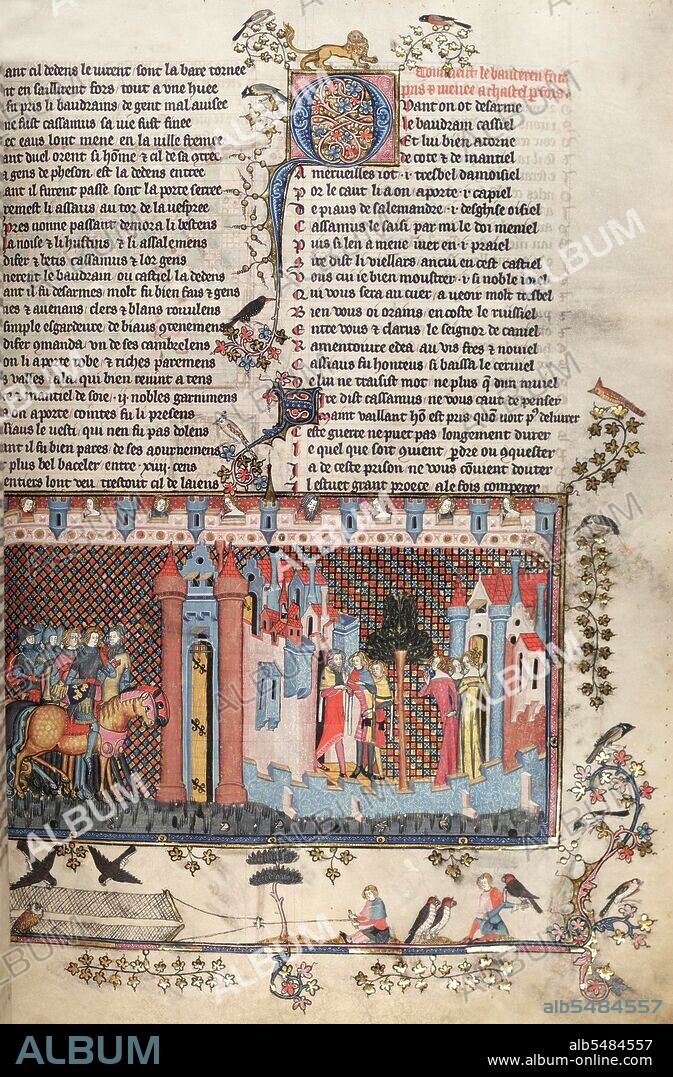alb5484557
Greece-Netherlands: Illuminated page from a medieval version of Pseudo-Callisthenes, 'The Romance of Alexander' (Greece, c.200-300 CE) produced in Holland by the Flemish illuminator Jehan de Grise between 1338 and 1344

|
Add to another lightbox |
|
Add to another lightbox |



Title:
Greece-Netherlands: Illuminated page from a medieval version of Pseudo-Callisthenes, 'The Romance of Alexander' (Greece, c.200-300 CE) produced in Holland by the Flemish illuminator Jehan de Grise between 1338 and 1344
Caption:
Attributed to an unknown author identified only as Pseudo-Callisthenes, 'The Romance of Alexander' was first produced in Greek between 200-300 CE from written accounts and stories derived from the oral tradition. Although notionally a history of Alexander the Great (d. 323 BC), it is really a mixture of legend and fact that raised the already remarkable accomplishments of Alexander's thirty two years of life to mythological status. The original Greek manuscript (of which there were actually three editions) is now lost, but it was subsequently translated into the Syriac, Armenian and Pahlavi languages, -- each introducing its own variations -- contributing stories to the Qur'an, inspiring Persian poetry and giving rise to its retranslation and dissemination throughout the Middle East. An early Latin version was the basis for translation into the vernacular languages of Europe where it became established as a popular Medieval tradition.
Credit:
Album / Pictures From History/Universal Images Group
Releases:
Model: No - Property: No
Rights questions?
Rights questions?
Image size:
3353 x 5100 px | 48.9 MB
Print size:
28.4 x 43.2 cm | 11.2 x 17.0 in (300 dpi)
Keywords:
ALEXANDER DER GROSSE • ALEXANDER OF MACEDON • ALEXANDER • ART • ARTS • BOOK • DUTCH • EMPIRE OF ALEXANDER • FLEMISH • FRUIT SALAD • GRECO • GREECE • GREEK • GREEKS • HELENICO • HELENISTICO • HELLENIC • HELLENISTIC • HISTORICAL IMAGES • HISTORICAL PICTURES • HISTORY IMAGES • HISTORY PICTURES • HOLLAND • ILLUMINATED MANUSCRIPT • ILLUMINATION • ISKANDER • LEGEND • LIBRO • MACEDON • MACEDONIA • MANUSCRIPT, ILLUMINATED • NETHERLANDISH • NETHERLANDS • PAINT • PAINTING
 Pinterest
Pinterest Twitter
Twitter Facebook
Facebook Copy link
Copy link Email
Email

